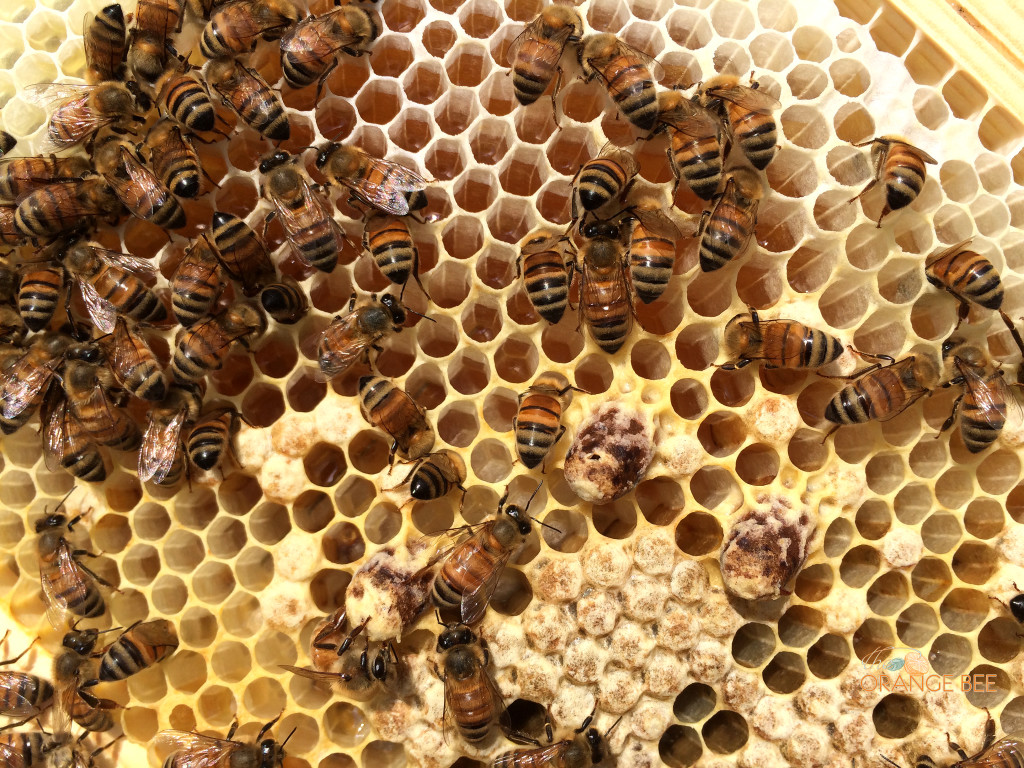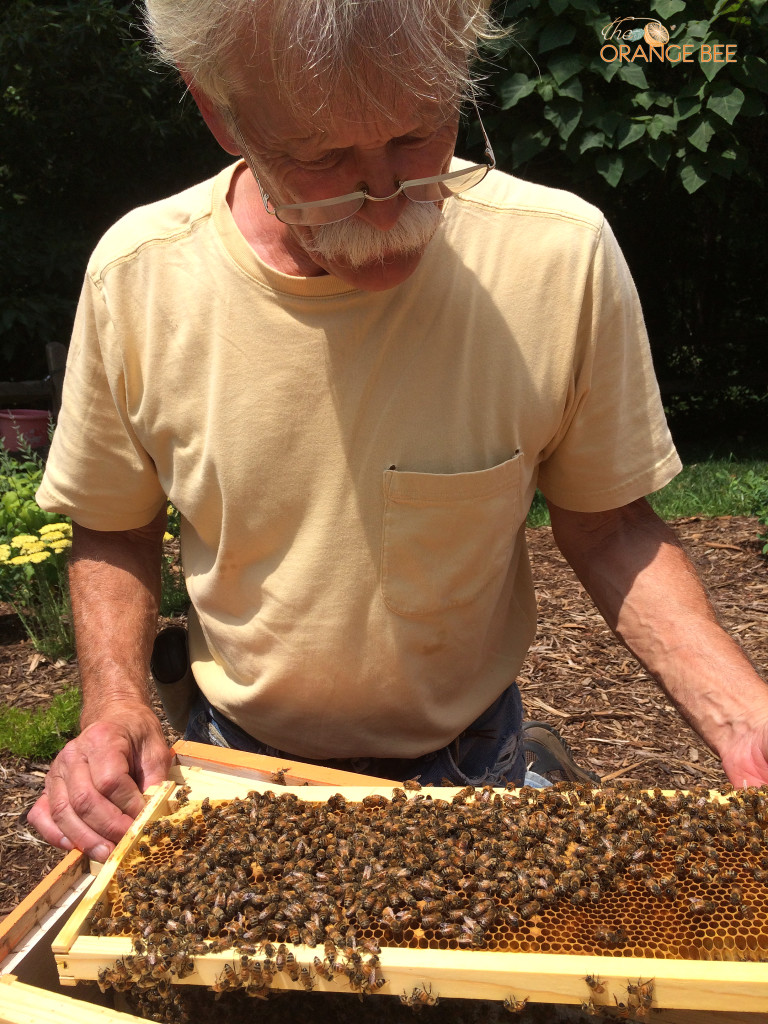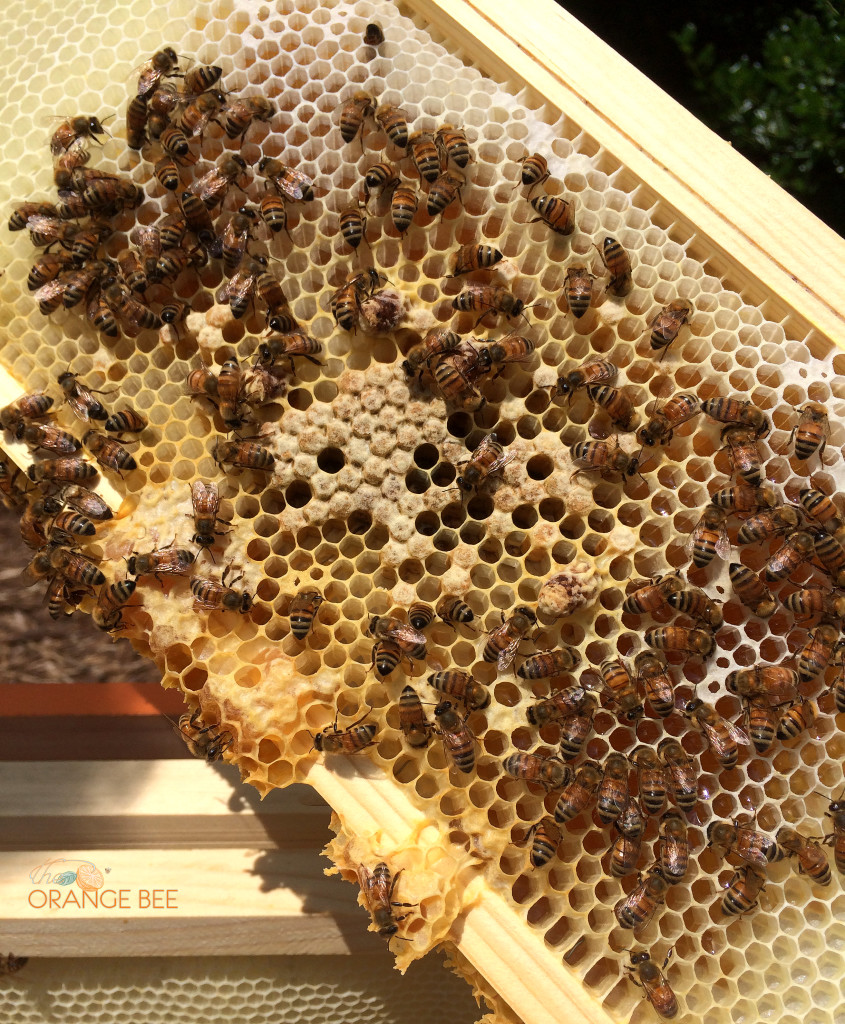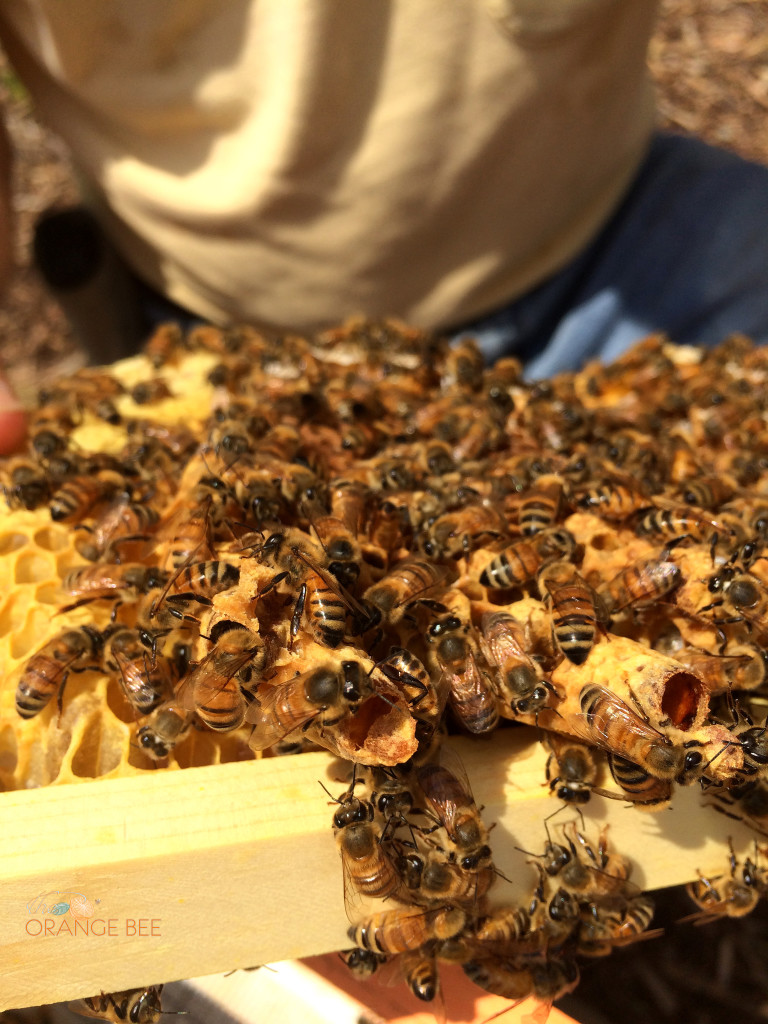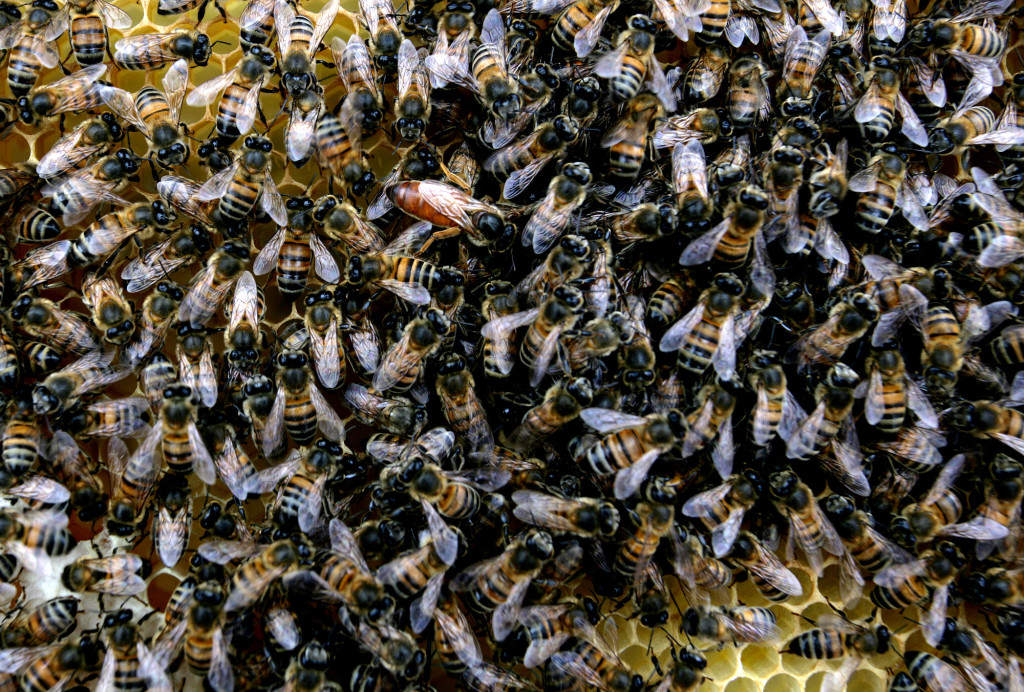Early one morning last week I received a phone call from the horticulturist at the Science Center. She excitedly explained that something peculiar was going on with the bees in Queen Charlotte hive. “Lots of bees, acting frantic and buzzing about more than normal”, was what she told me. She asked if I thought they were swarming? From her description it sounded more like robbing. Robbing is where bees from a strong hive will attempt to enter a weaker hive and literally rob them of their hard earned honey stores. I told her I would quickly gather my gear and head over.
When I arrived at the hives things had calmed down considerably so I’m uncertain if the hive was being robbed. I needed to do an inspection in any event, so I prepped the smoker and suited up. Let me tell you it is hot in a bee suit in June! I opened Q Charlotte hive to look for signs of larvae, brood and honey and hopefully have a peek at the queen, as she has shown herself on every occasion I’ve opened her hive. When I first opened the hive I immediately knew something wasn’t right. There weren’t very many bees in the hive and there was not a sign of larvae, or the queen and only a small amount of honey. I noticed that down in the cells where there should be nice white larvae there seemed to be dark brown and black gunk. I have never observed this before. I continued to search through each frame and time after time I found the same results. Now I began to feel concerned but had no idea yet what was happening.
I took the entire hive apart while the bees that were in it carried on, sweet as can be. After I finished putting the hive body back together I took another look at the frames from the top super. I noticed what seemed to be queen cells. Queen cells are larger than worker bee or drone cells and look like half of an unshelled peanut. I noticed about 6-8 of these cells positioned on the frames. You should be able to see them on the photo below.
Not wanting to keep the bees exposed to the heat and sunshine any longer I closed up the hive and moved on to Queen Natty hive. In this hive there are multitudes of bees, larvae, honey; all in all this hive looked super strong.
I came home knowing I had some problem solving to do. Later in the evening I pulled out my books and began to search for answers. I determined that one cause of the problems Q Charlotte hive was experiencing might be the dreaded American Foul Brood disease or possibly the less fatal European Foul Brood disease. Having seen the dark area in the bottom of the cells with few bees was the clue. If a hive contracts AFB disease the entire hive must be burned….at the moment I read that I knew I’d not be able to handle that, but crossed my fingers and hoped if it was a foul brood issue that it was the EFB type which can be medicated and controlled. That night I couldn’t sleep for thinking of the sweet bees and what their future held. I tossed and turned and thought during my sleeplessness of what my best plan of action would be the following morning.
After downing a couple of cups of coffee all the while eyeing the hands on the clock, I waited for 9 o’clock to roll so I could call the man at the bee supply company for some advice. Turns out that was exactly the right idea as he passed along the name of a state bee inspector to me with advice to call him, mention I suspected foul brood and he’d be over asap! He was correctomundo!
Later that afternoon Mr. Hopkins met me at the center and we went out to take a look together. I’m not sure if you can imagine my dread at the thought of burning an entire hive but I was nervous and worried. When we got Q Charlotte hive open he began to look at the issue of the dark cells I had described. He very quickly poked around in a couple of the cells and explained that those were dead larvae but not AFB or EFB. I jumped for joy at that news. We then began to try and figure out why there were so many queen cells, no queen in sight and no brood to be found.
Here’s the thing about bees. We may never know exactly what happened but he suspected that the hive had swarmed early on and the bees were making a new queen. In the meantime with no queen they have no way to continue to grow the hive. So their efforts haven’t been normal. Thus some dead larvae, creating the dark, suspicious looking cells. In the picture below you can see some dark cells, some with honey and a small amount of capped brood. Hopefully the capped brood will hatch and add a few more worker bees to the hive. Some of the queen cells are visible as well.
There were a few of these queen cells that had been vacated (see pic below) so we wondered where those queens had gone. They were not to be found in the hive, no sign of larvae…??? We were both a bit stumped and he’s a lot smarter than me about this stuff.
He decided since there were several queen cells still occupied to pry one open and see if the queen looked healthy. This my friends is when a miracle happened. The queen in the cell he opened stuck her beautiful head out and was immediately met by a worker who began to feed her. This worker bee was joined by a few others right away and they began to welcome and groom her. She quickly disappeared under the double layer of wax on the frame and we couldn’t believe our eyes. The brief glimpse we got of her showed a strong and healthy queen. Unfortunately at that moment I was not prepared to photograph the event, and sometimes it’s better to see with your own eyes and not worry about capturing it on a camera. The following picture will show you what she did look like. This is not the end of the miracle – read on…
As we began to place the frames back into the hive we saw a second queen and then another. One of them took off in flight and Mr. Hopkins reached out and caught her with his bare hands and placed her back into the hive. Before we could finish closing up the hive we saw no less than 4 queens and two more times we caught them trying to fly and once he plucked one off of my shoulder, each time placing her at the hive entrance. We went from no queen, not even one, to 4 or more in a matter of minutes. We were both quite pleased and surprised to say the least. How did this happen? We can’t say for sure. What will happen next? Rules are only one queen per hive. The queens in hive Charlotte will work it out. Only one will remain and only one will be queen. I’m hoping she’s the stronger of the bunch. She will need to send her sisters off to bee heaven before she can rein but that’s life as a bee.
I learned an incredible amount of bee “stuff” that day. I saw some things that many of us never see, even bee keepers. I’ll never forget this adventure and I’m anxious to check on this hive and see what progress has been made. I know I need to give them about a week to settle in, crown their new queen and allow her to begin laying eggs. I’ll be going out at the end of the week and will report back. Crossing my fingers and you should too that all is well. I need to see one, and only one queen, eggs, larvae and more honey beginning to be made in this hive. These are the sweetest bees and I will do all I can to help them grow and thrive!
